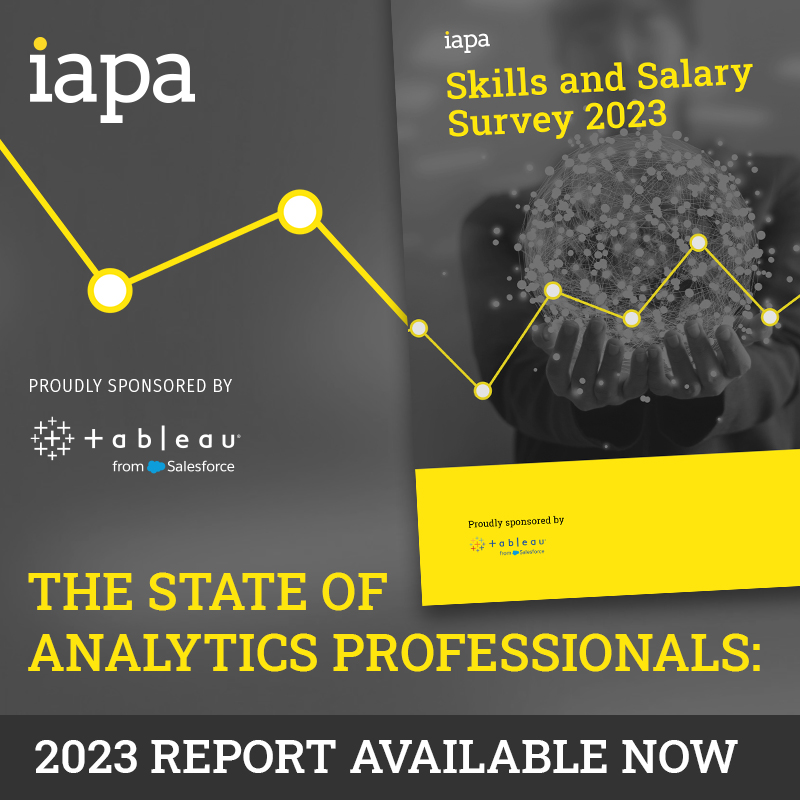IAPA Skills and Salary Survey 2023 shows widening gender pay gap across Australian data and analytics professionals
The good news for Australian analytics professionals: They’re getting paid more than ever. The bad news? The pay gap between the sexes is widening.
The 2023 edition of the IAPA Skills and Salary Survey report has arrived, the sixth in this series of important reports, proudly sponsored by Tableau from Salesforce.
This year’s report shines a captivating light on the state of analytics professionals in this country today. On a bright note, the majority of figures tell a largely positive story of the progression of our data and analytics community.
The median base salary is up, for example, rising from $130,000 to $158,000 between 2017 and 2023, with growth of more than 10% over the last three years. The growth is driven by the middle 50% of paid professionals, with the top 5% experiencing a slight decline in median base salary between surveys.
Another positive finding from the report is that tenure and experience are being rewarded handsomely in analytics roles. This year’s results show the jump to a senior analyst/senior data scientist role brings a hefty 67 per cent pay packet increase, followed by a princely 20 per cent bump for every promotion thereafter.
But there are some alarming statistics in this year’s survey too. The biggest is a growing gender pay gap. Despite witnessing several years of improvement between 2014 and 2017, this year’s IAPA Skills and Salary Survey shows the gender pay gap widening to 18 per cent, up from 8 per cent in 2017.
Figures show this gap generally gets worse across more senior ranks across the analytics industry. The discrepancy becomes most stark when looking at median base salary versus complete salary packages on offer between male and female professionals.
Outside of exploring the state of salaries, this year’s report takes a deep dive into the challenges and priorities of modern data and analytics professionals. Topping the list of critical soft skills senior managers recognise today is value measurement, while across the broader group, data visualisation and storytelling are the soft skills most in action across teams. Prioritisation is the top challenge data and analytics professionals are facing currently.
When it comes to disruption, AI is not surprisingly one of the most disruptive forces data and analytics professionals are coming to grips with. This year, 61 per cent of respondents told us they plan to embrace Gen AI in the next three years, including 29 per cent over the next year. This is on top of the 21 per cent who are already embracing this democratised and exponentially growing technology in their organisations.
We’ve also taken a look into tooling, programming languages and platforms in use, finding a record number of all being used by data and analytics professional teams in Australia in 2023.
“The data from this year’s survey threw up a heady combination of surprising, expected, welcome and some disappointing results,” said IAPA managing director, Antony Ugoni. “After a tumultuous period where salaries (in particular) took a roller coaster ride during the 2019-2022 pandemic period, it was definitely time to reassess and reach out to the IAPA community to measure and recalibrate.
“We encourage all members to check out one of the most robust pieces of data-driven skills and salary evidence in the Australia analytics landscape right now.”

